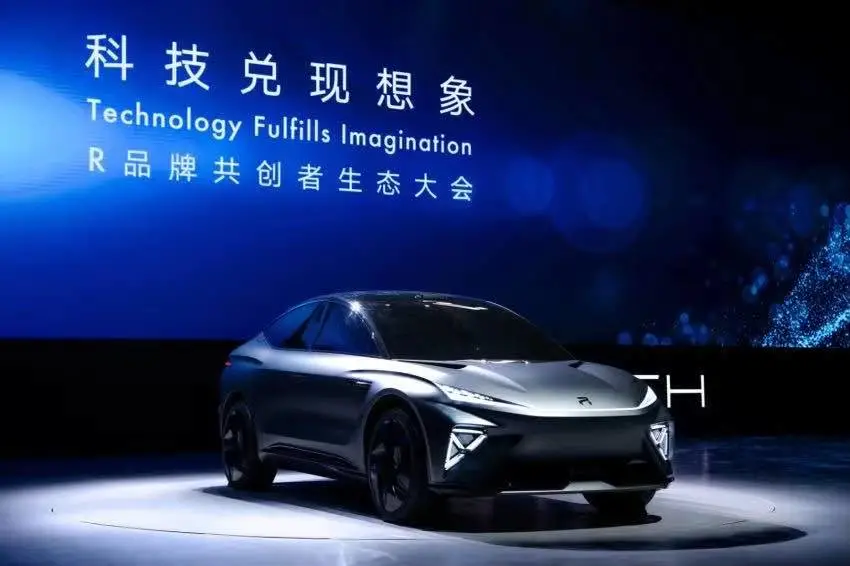“What do you imagine the future of cars to be?” Perhaps, a thousand people will have a thousand different imaginations of future cars.
At the “R Brand Co-creative Ecology Conference” held by SAIC on March 18th, R Automobile, as SAIC’s high-end intelligent sub-brand, brought its new “smart digital product” – R-TECH, with the slogan “Technology realizes imagination”.
As the pioneer of SAIC, a traditional brand in the “new four modernizations” road, what surprises will R-TECH, which took five years of research and development and has a total investment of over 20 billion yuan, bring me? What kind of future car can we imagine? Let’s take a closer look.
Autonomous driving: the arms race of black technology
In the future travel field, autonomous driving is like a “pearl on the crown”, and each brand is vying for dominance. For the three core processes of perception, decision-making, and execution in autonomous driving, each brand is doing its best. The full-stack self-developed advanced driving solution PP-CEM™ released by R-TECH this time also had a lot of powerful features.
Compared with Tesla’s “computer vision” technology that replaces lidar with superior algorithms, R Automobile uses more black technology in hardware, and the advanced driving platform PP-CEM™ has a fusion of lidar, 4D imaging, 5G-V2X, high-precision maps, visual cameras, and ultrasonic radar, which creates a “six-fold fusion perception system” that is all-weather, all-scene, super-field-of-view, and multi-dimensional, to cope with complex weather conditions such as rain, snow, and dense fog, as well as “Chinese-style” complex traffic scenes.
The world’s first Luminar lidar launch
In this R-TECH release, the first heavyweight news was the world’s first launch of the Luminar lidar.
Under the perception system composed of millimeter wave radar and camera, the image collected by the sensor is two-dimensional and needs to be rebuilt into a three-dimensional image by the system. This complex process may inevitably result in some information loss or errors, such as white semi-trailer trucks may be identified as blue sky, or “ghost cars” may appear in dark and narrow environments such as tunnels. These “corner cases” that stymie deep learning are the main culprits causing frequent “malfunction” of autonomous driving.Therefore, except for Tesla, almost all car companies have chosen LIDAR and hope to use its ability to directly create precise and reliable 3D images to break through the bottleneck of current autonomous driving, and R cars are no exception. R-TECH uses the highest-end Luminar LIDAR in the industry. As the most valuable LIDAR company, Luminar’s use of fiber-optic laser design and InGaAs (indium gallium arsenide) receivers has created the most powerful LIDAR performance.
The advantages of Luminar’s position can be seen from the comparison of unfamiliar proprietary terms. Recently, Huawei released the first automotive-grade LIDAR, which has 96 beams, a wavelength of 1550nm, and a full-field measurement range of 150 meters. R-TECH uses a Luminar LIDAR with 300 beams, a wavelength of 1550nm, and a detection range of 500 meters. More beams and a longer detection range represent higher measurement accuracy and performance. In addition, size and power consumption are also key factors affecting LIDAR use.
Last year, a Model Y test vehicle from Tesla was found in the San Francisco area with a large imaging device mounted on the roof, which was the Luminar Hydra LIDAR unit used for testing. The Luminar LIDAR used in R-TECH’s production line has a significantly reduced size, which is only the size of a home router, making it much more convenient for LIDAR to be installed on vehicles.
Before R-TECH was released, companies such as Volvo, Toyota, Daimler, and Mobileye had already been testing the Luminar LIDAR. The global debut of Luminar on R-TECH confirms R’s active stance in the intelligent driving field.
In September 2020, Xilinx and Continental jointly announced the launch of the first 4D imaging radar that could be put into production in the automotive industry. Just half a year later, R-TECH announced that it will achieve the first PREMIUM 4D imaging radar in China in next year’s mass-produced car ES33. We can’t help but marvel at the fierce competition in the field of intelligent driving today.What are the advantages of 4D imaging radar?
Conventional millimeter wave radar detects data in three dimensions of distance, speed, and azimuth, and does not have the ability to perceive the height of objects. However, the PREMIUM 4D imaging radar installed by R-TECH adds “vertical resolution” to the original three dimensions, enabling it to measure height.
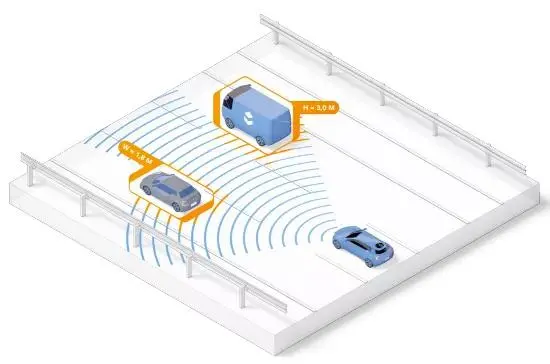
For example, with a 17 cm high can of Coke as an example, the PREMIUM 4D imaging radar can detect the can of Coke 140 meters away. By measuring the height, the vehicle can predict whether it can safely pass the can of Coke without being too sensitive to lower obstacles on the ground, and issuing frequent useless warnings. In addition to height detection, the accuracy of vehicle detection beyond 350 meters also makes the “eyes” of the vehicle more sensitive.
NVIDIA Supercharged Chip with up to 1000TOPS Computing Power
As the sensor is upgraded, the chip computing power that serves as the “brain” of the vehicle is also correspondingly improved. R-TECH uses the NVIDIA DRIVE AGX OrinTM ultra-high computing power chip, which can reach a computing power of 500~1000+TOPS. This chip helps R-TECH to join the top ranks of 1000+TOPS computing power.
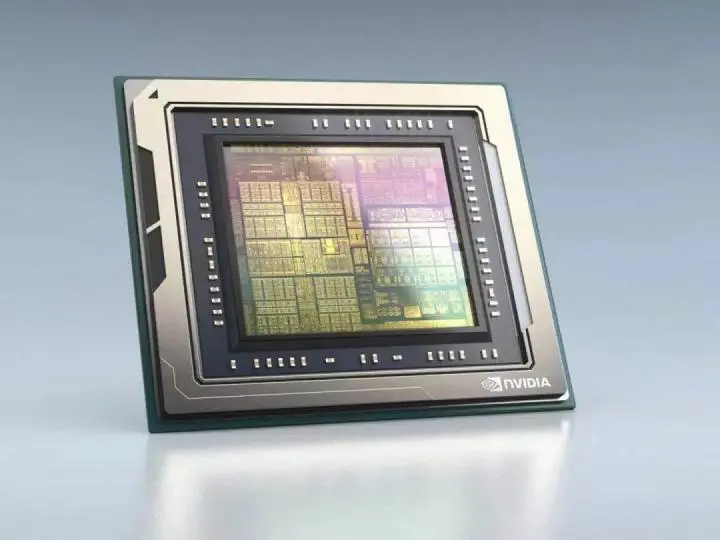
According to NVIDIA’s previous announcement, the performance of this new generation of system-level chips is 7 times higher than that of the previous generation Xavier system-level chips. It is expected to be mass-produced in 2022, which coincides with the launch of R-Car ES33. It is worth noting that NIO also used the NVIDIA AGX OrinTM chip in the preview of their ET7, and both models, which are expected to be launched in 2022, chose the same chip, which is bound to be another battle between independent brands and new forces in car manufacturing.
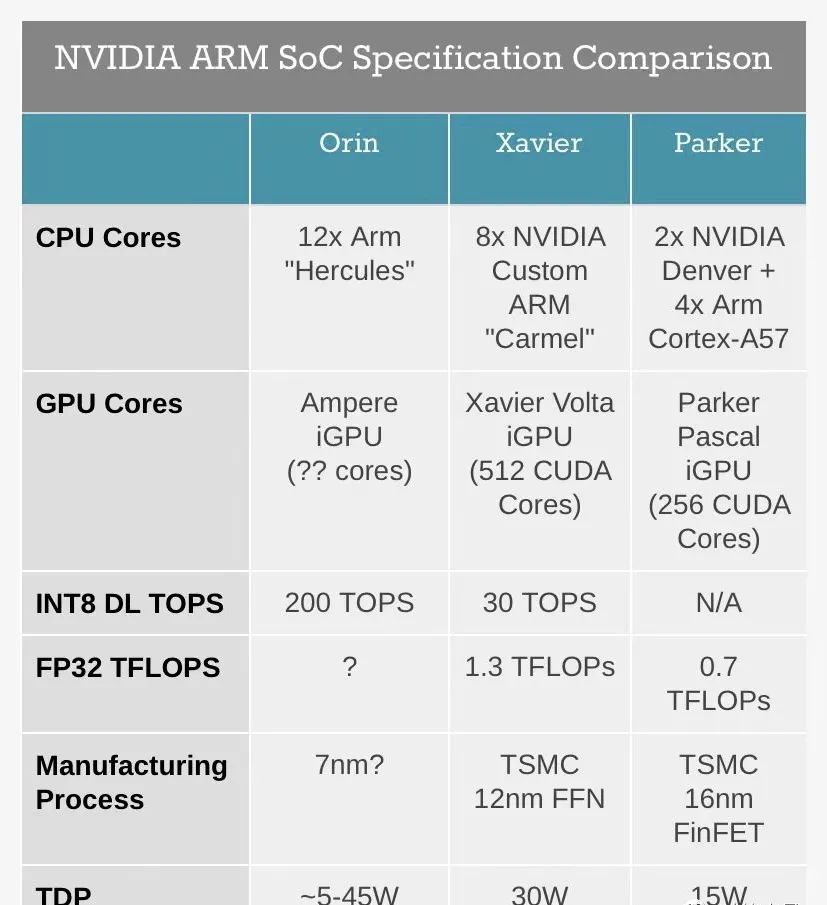
Although R-TECH did not release more automated driving algorithm and specific function demonstrations at this press conference, the super high computing power and software-defined features of the Orin chip provide powerful support for the development of more automated driving functions.
Upgrade the Competition with Technology CompaniesIf we were to compare the hardware performance of different car manufacturers, such as chip computing power and sensor capabilities, to a competition, then the recent actions of traditional car companies exemplified by SAIC are like storming an arsenal, raising the bar for the competition.
Whether it’s SAIC and Luminar joining forces to launch a LiDAR sensor, the Chinese debut of the 4D imaging radar, or the preemptive use of the new NVIDIA chip, we can see that the collaboration between traditional car companies and technology companies is deepening. Earlier, there was Baidu collaborating with Geely, Huawei joining Changan, and Alibaba teaming up with SAIC, among others.
Different from the traditional OEM and Tier 1 co-operation relationship, this is not just a simple procurement relationship between technology companies and car companies. Nowadays, more and more traditional car companies, like SAIC, choose to collaborate deeply with technology companies. This kind of deep collaboration and joint research and development mode can not only use new technologies in different fields of technology companies to meet the needs of car companies to “redefine cars,” but also for technology companies that urgently need mass production, the systematic and scalable advantages of traditional car companies can help them achieve continuous iteration of data quickly. It can be said to be a win-win situation.
Cutting-edge technologies like LiDAR, 4D imaging radar, and the Orin chip have no precedents for mass production and installation in cars. As one of the first to try in this area, the success of outputting these functions on top of the strong hardware foundation remains uncertain. However, backed by the alliance forged between SAIC, a traditional domestic brand, and a technology company, with ample technical storage, rich car-building experience, mature industry chains, and strong resource integration capabilities, perhaps ES33’s landing effect can add some confidence.
Handing over the initiative of the intelligent cockpit to users is R Automotive’s transformation from an engineer’s mindset to a user’s mindset, which shows us the playability of the intelligent cockpit. If “software-defined cars” are the current consensus of the automotive industry for the future, then R Automotive’s proposal offers a different perspective.## R-TECH Provides SAIC’s Self-Developed Full-stack Software Platform Based on SOA Cloud Management End for Intelligent Cockpit
R-TECH provides SAIC’s self-developed full-stack software platform based on SOA cloud management end to serve the intelligent cockpit, which can be extended by AIoT hardware to realize plug-and-play. It’s like a huge Lego for the intelligent cockpit, where everyone can add features according to their own preferences at any time. The cockpit truly achieves “a thousand faces for a thousand people and a thousand cars”. As for more information about the SOA stack software platform, it was not disclosed this time. However, imagine that if a car owner with a pilot dream can transform the intelligent cockpit into an airplane cockpit, it is still very attractive.
Intelligent Power Supplement Ecological System + Never Self-Igniting Battery
For a new energy vehicle, the battery is undoubtedly crucial, and battery safety, power supplement anxiety, and residual value are the key concerns of users. To address these concerns, R-Car has proposed a strategy that is rechargeable, replaceable, upgradable, and inter-chargeable.
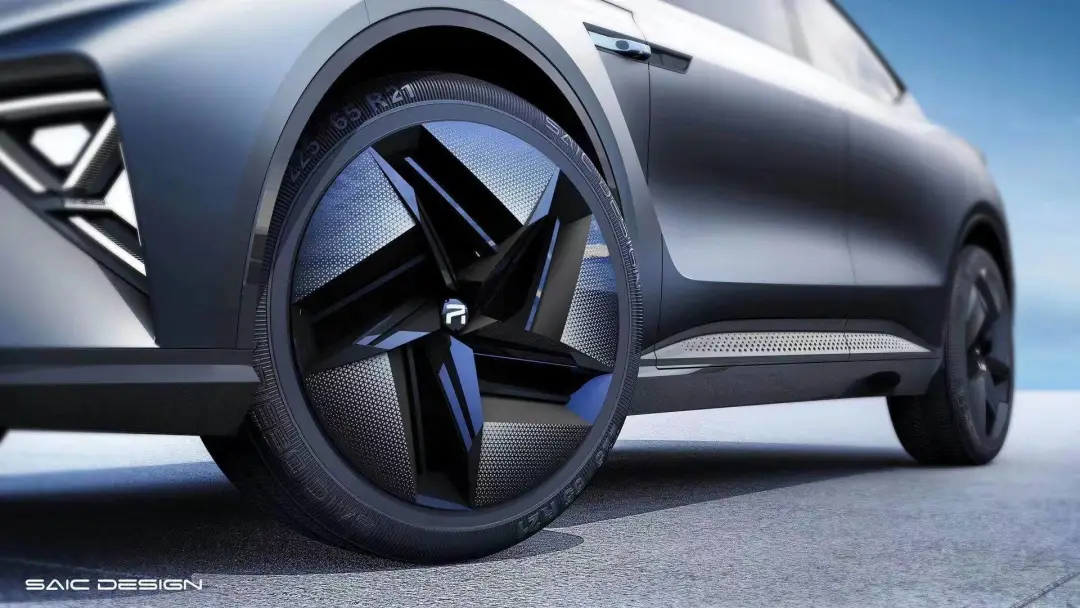
In terms of safety, R-Car ensures the safety of the battery by using aviation-level zero thermal runaway management and cloud-based real-time monitoring and early warning to control the probability of thermal runaway caused by cell problems to a range close to zero.

In terms of charging, SAIC has teamed up with State Grid, Southern Power Grid, Teld, Xingxing Charging, BOE, and Oudong New Energy to establish a “one-kilometer energy supply ecosystem”, striving to find public charging stations connected to the R-Car APP within one kilometer in the central city area. At the same time, the ES33 carried by R-TECH will adopt a vehicle-electric separation mode. When buying a car, customers can choose a 600km, 700km, or 1000km battery according to their needs. The 2-minute fast battery replacement service can also minimize power supplement anxiety.
Finally
R-TECH’s aggressive technology configuration and ES33’s sharp and radical appearance make us look forward to the ES33 while also seeing the ambition of R-Car.
As SAIC, an old heavyweight in the car industry, accelerates toward intelligent cars, grabbing both hardcore functions and personalized experiences, its stunning moves make the already fierce competition in the high-end electric car race more intense.
This article is a translation by ChatGPT of a Chinese report from 42HOW. If you have any questions about it, please email bd@42how.com.
